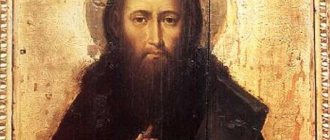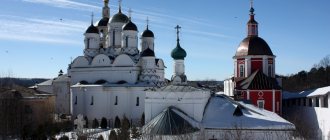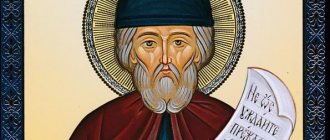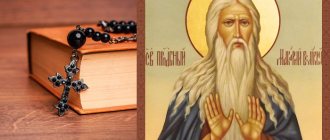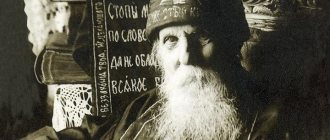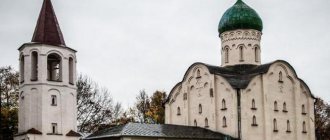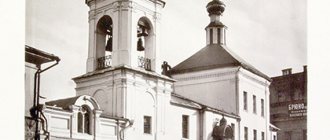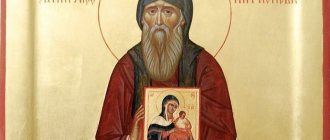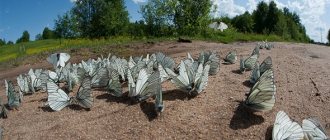John the Stylite
,[a] also known as
John of Litarba (died c. 737/738), was a Syriac Orthodox monk and author. He was a stylist at the monastery of Atarib and part of the circle of Syrian intellectuals active in northern Syria under the Umayyad Dynasty.[1][3]
Little of John's writings survive. Although he maintained correspondence with James of Edessa (died 708) and George, bishop of the Arabs (died 724), his only surviving letter is fragmentary and unpublished (as of 2011). It is addressed to the Arab priest, Daniel Ṭuʿoyo, and concerns the prophecy in Genesis 49:10. He also wrote a history with a strong chronographic focus, apparently as a continuation of the chronicle of James of Edessa, ending in 692, which was itself a continuation of the 4th century. Chronicle
from Eusebius. John took the story to the Council of Manzikert in 726.[4] However, it has not survived, although it is referred to and quoted in some places by Dionysius of Tel-Mar and Michael the Syrian.[1][3] Dionysius's comments suggest that John did not exactly follow the format of Eusebius or James.[4] Other evidence suggests that John corrected the chronology of Jacob Muhammad by giving him a reign of ten years (622–632).[5]
It is controversial whether "John the Stylite in the monastery of Mar Zdura in Saruga"[c] wrote a small grammatical treatise and the dispute should be identified with John the Stylite of Litarbus.[2][3] The monastery of Mar Zdura in Sarug is mentioned by Michael the Syrian in the 12th century.[2] The identity is supported by the fact that the grammatical treatise depends on the grammar of Jacobus of Edessa;[d] against the fact that it is preserved only in the Nestorian manuscript.[1] The disputation[e] likewise survives only in the form of a Maronite summary.[2] It is written as a theological dispute between John and a non-Christian (possibly Muslim) opponent.[1] Harald Suermann argues for parallels between the dispute and the letter of James of Edessa to John of Litarbes. Karl Anton Baumstark did not accept it as the work of the stylist Lytarbus, but accepted a grammatical treatise.[2]Robert Hoyland believes that there are two different people.[6]
Although his own writings are largely lost, something about John's intellect and education can be gleaned from the surviving eleven letters of James of Edessa and the four letters of George addressed to him. They are a circle of intellectuals discussing a variety of topics: chronology, history, philosophy, astronomy, literary criticism, and biblical exegesis.[1][3] John was a younger contemporary of James, and his death is usually placed in 737 or 738.[1][2]
Life of Saint Simeon the Stylite
The future Saint Simeon was born in Cappadocia, in the small village of Sisan. His parents accepted the Christian teaching and after the birth of the baby they baptized the child according to the teachings of Jesus. Susotion and Martha (that was the name of Simeon's father and mother) raised their son in simplicity and love, teaching him the truths of the Word of God from an early age. When the boy was 13 years old, he began to help his parents run the farm; his duties included herding sheep. Simeon treated his work responsibly and with love, so his parents could not be happier with their son.
While visiting a Christian church, during one of the sermons the young man heard the Beatitudes and was touched by their depth. But since he did not rely on his, as it seemed to him, immature judgment, he turned to one elder for help so that he could more clearly explain the content of what he heard in the temple. After carefully listening to everything that the God-fearing elder explained to him, Simeon made a firm decision to follow the Gospel path and devote his life to serving the Almighty.
He went to the monastery, which was located not far from his home, and began to tearfully beg the abbot to accept him as one of the brethren. A week later, Simeon was given monastic tonsure, and he, along with other monks, began to comprehend the essence of the Holy Scriptures, spending time in fasting and prayer. The young monk was so zealous about fasting and prayer that this alarmed the abbot, since the rest of the monks were unable to do it. The abbot of the monastery suggested that Simeon either moderate his asceticism or leave the monastery. The saint chose the second option and left the monastery, where he took monastic vows and labored for several years.
The monk settled at the bottom of a dry well and there he continued to improve in monastic deeds and unceasing prayer. After some time, angels appeared in a night vision to the abbot of the monastery, where Simeon had previously labored, and ordered him to return the monk back to the monastery. The abbot did as he was commanded, but upon his return Simeon did not stay long in the monastery. This time he settled in a stone cave, which was located near the village of Galanissa, and spent three years there, increasingly improving in asceticism.
One day on Holy Pentecost, the monk decided to completely give up food and drink and, with God’s help, endured this strict fast. From then on, he constantly spent the Holy Pentecost without food or water, praying standing for twenty days and sitting for twenty days, so as not to fall from weakness.
Having heard about the saint who led such an ascetic and pious lifestyle, many people began to flock to that place, hoping to receive healing from their illnesses from Simeon. The monk possessed not only the gift of healing, but also the word of Christian edification. However, Simeon did not strive for worldly glory and longed for lost solitude with the Lord, so he chose a type of asceticism that was previously unknown. He built a stone pillar, the height of which was 4 meters, and settled on its top in a small cell, spending all his time in fasting and fervent prayer to the Lord.
Rumors about the monk, who chose such a complex method of asceticism, eventually spread to the highest church hierarchy. Patriarch Domnin II of Antioch personally went to visit the saint, served the liturgy on the pillar and administered communion to Saint Simeon. Not far from the place where the pillar was located, the elders labored in the desert; Having learned about the ascetic monk, they decided to check whether this monk was doing a godly work.
They sent their envoys to him, who, on behalf of the elders, were to order Simeon to come down from the pillar, and if he disobeyed, drag him down by force to the ground. The monk showed humility and meekness and carried out the order, after which the messengers blessed him for the work of asceticism on behalf of the elders.
Throughout his ministry, Saint Simeon often faced temptations and difficulties, but he overcame everything with the help of the Lord. He did not ascribe glory to himself and was not proud of his asceticism, but praised God for the fact that the Heavenly Teacher would grant him strength and patience.
Gradually Simeon increased the height of the pillar on which he labored until it reached 40 cubits. The place where the monk stood was surrounded by a fence so that people who came would not disturb the solitary prayer of the righteous man. One day, the saint’s mother came to the pillar, having been unable to find her missing son for a long time. However, even for her the reverend did not make an exception; she died leaning against the fence. Then Simeon ordered the coffin to be brought and buried his mother with all honors.
The monk lived for about 80 years, of which 47 he stood on the pillar. Thanks to his asceticism in difficult conditions, many pagans accepted the Christian faith, as they were amazed by the fortitude and physical strength of the saint, which the Lord gave him. His closest disciple Anthony was the first to learn about the death of the saint. When Simeon did not show himself to people for three days in a row, he climbed the pillar and there he saw the body of his mentor, frozen in a prayerful pose.
The saint was buried with all honors; the burial was performed by the Patriarch of Antioch. Many people came to see off Simeon the Stylite on his last journey, they buried the saint not far from the pillar, and in the place of the prayerful labors of the righteous man, his disciple built a monastery, to which the saint’s blessing extended.
Recommendations
- ^ a b c d f g gram hour i j
Van Rompuy 2022. - ^ a b c d f g gram hour
Suermann 2008. - ^ a b c d
Tannus 2022. - ^ a b
Hoyland 1997, p. 390. - Palmer 1993, para. 36.
- Hoyland 1997C. 516–517.
Monastery of St. Simeon
The mountain in the province of Aleppo on which the monastery is located also bears the name of St. Simeon. The monastery was founded by the saint’s disciples during his lifetime, not far from the stone pillar where Simeon performed his feat. One of these students was the Monk Daniel the Stylite. Saint Daniel came from wealthy merchants of Constantinople, then abandoned his craft and took monasticism. Having acquired the authority and respect of the emperor, after the death of Saint Simeon in 459, Daniel asked to build a large church in honor of his deceased spiritual mentor. Construction began during the reign of Emperor Leon. The Byzantine Emperor Zeno, the spiritual son of St. Daniel, completed the construction of a grandiose church around the pillar of Simeon.
Construction of the main cathedral began in 476 and was completed in 490. The temple had the shape of a cross, and in the middle there was a column (stone pillar) on which Saint Simeon lived and prayed. Such temples at the site of martyrdom or asceticism of ancient saints were called martyria
(evidence). At the end of the 5th century, several more buildings were built around the martyrium - cell buildings for monks and a baptismal chapel. Fragments of the pillar can still be seen among the ruins of the great monastery, and this shrine has attracted pilgrims for centuries.
In the first half of the 6th century, a series of earthquakes occurred in northern Syria, which greatly destroyed the cities of Aleppo, Antioch and Seleucia. Both the Cathedral of St. Simeon and the very foundation of the column on which he labored were damaged. When Syria was conquered by the Muslims, they left the monastery of St. Simeon the Stylite to Christians for some time, as well as other local churches and monasteries. The Byzantine Empire weakened and divided, but the monastery of St. Simeon in the hands of Christians remained something of a fortified fortress for a century. Since those times, the name has been preserved in history - Qal'at-Sim'an ("Simeon's fortress"). During this period, the floor of the church was paved with mosaics and some restorations were carried out. This is evidenced by an inscription on a mosaic found on the floor of the church: it mentions that Emperor Basil II (976–1026) and his brother Constantine VIII (976–1028) paved the church with mosaics and decorated it in 986.
The Hamdani prince Saad ad-Dawla ibn Saif ad-Dawla captured the monastery in 1016. After that, Qal'at-Sim'an was used by Muslims as a fortification. In the 16th century, an influential Kurd lived in the eastern part of the temple, and the remaining buildings were gradually inhabited. After another couple of centuries, the fortress complex was liberated from its inhabitants; it was recognized as a monument of ancient architecture and an object of study for archaeologists.
The Cathedral of St. Simeon the Stylite, built around a pillar, historically had the appearance of an octagonal building, where four temples converge in the shape of a cross. The western, northern and southern temples had the same dimensions relative to the center. The temple on the eastern side was distinguished by its larger size and splendor of decoration. Divine services were held here on Sundays and holidays, where the inhabitants of the monastery and numerous pilgrims from all over the world prayed together. In three other churches, services were held on weekdays for separate groups of pilgrims.
Four churches, forming the sides of the cross, were built according to the basilica type. Each looked like a large portico, divided into three parts by arches. Thus, the cathedral includes both an octagon and a cross. At the northern wall of the main eastern temple there is an ancient burial place of monks dating back to the end of the 5th century. This is a crypt carved into the rock, and the bones of deceased monks rest in it. There is another monastic burial in the wall of the northern temple. On the eastern and southern sides of the monastery there were rectangular courtyards. There are three-story buildings that housed stables in ancient times, and some buildings were completed in the Middle Ages. The monks' cell buildings were located on the eastern side of the monastery, and to the southeast of the main temple there was a small monastery church, where the daily prayer of the monks was performed. An apse was found during excavations in its southwestern corner. A large stone with beautiful decoration may have served as a covering for a child's baptismal font. Presses for making wine or olive oil have also been discovered.
The baptismal temple was a square building, in its eastern part there was a baptistery - a rectangular recessed font for the baptism of adults. In the southern part of the temple the sacraments of Baptism, Anointing with Holy Chrism and Communion were performed. The area of the main temple and the baptismal house occupied approximately 2000 square meters. meters. The total area of the monastery with the courtyard and cemetery is 5000 square meters. meters.
Standing Stronghold
The Syrian war caused serious damage to the Qal'at Sim'an monastery. Militants fired at it, and they deliberately tried to destroy the shrine by detonating a mine at the foot of the pillar of St. Simeon. A fragment of the pillar was thrown from the pedestal where it had been for centuries. The explosion severely damaged the surviving columns and arches, some were broken and moved out of place. The wings of the basilica collapsed due to the many explosions that hit the buildings. The buildings of the monastery were under threat from the Syrian and Turkish armies. In addition, the main building of the monastery was destroyed due to illegal excavations and removal of stone. Despite these sad events, the ruins of the monastery of St. Simeon remain today one of the oldest monumental buildings in northern Syria, evidence of the faith and spiritual greatness of the ancient Christian ascetics.
January 21, 2022
